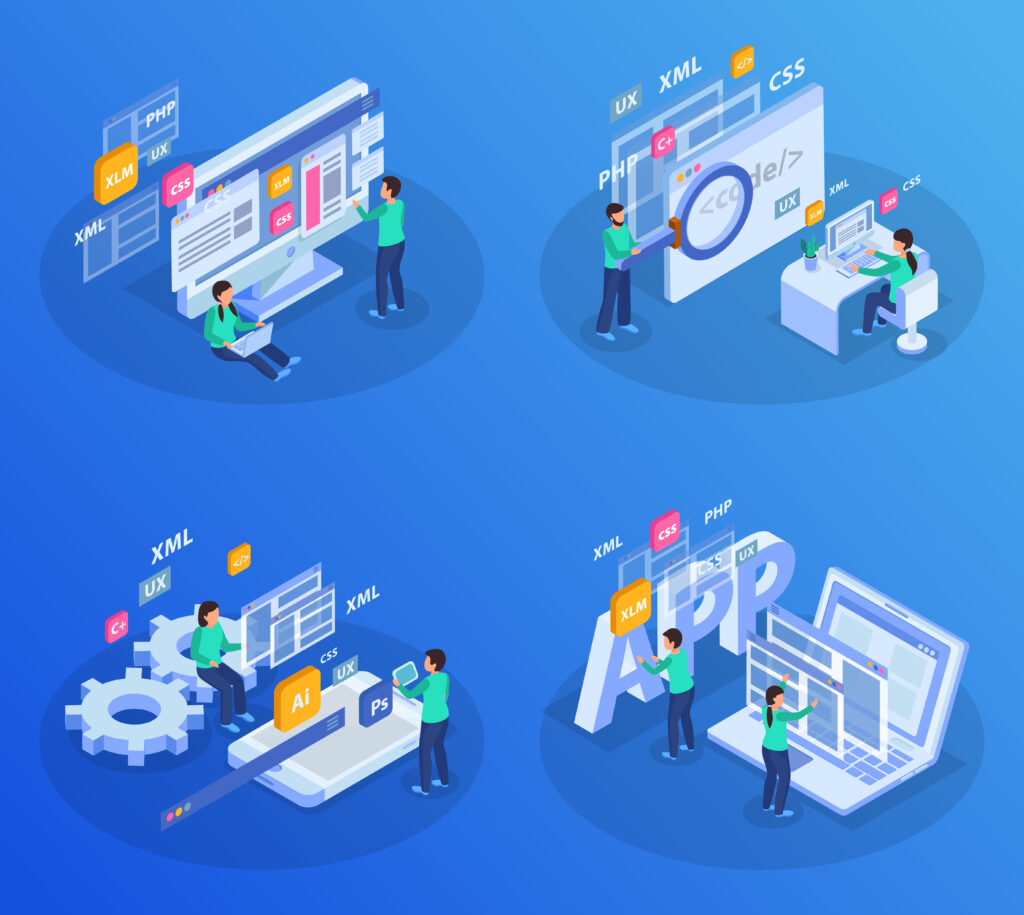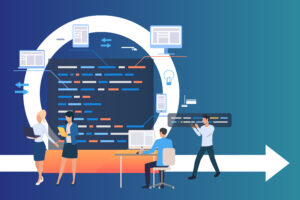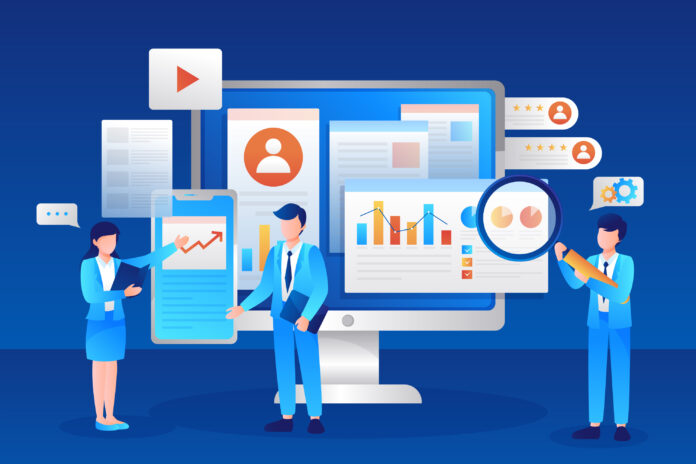As your business scales, the software solutions you rely on can either be your secret weapon or your weak link. The decision to create custom software or use an off-the-shelf package can make or break your company’s progress, especially when it comes to buying software.
On the one hand, building your own software from the ground up allows you to tailor every feature and function to your exact needs. But it also means a serious investment of time, money, and technical resources. Buying ready-made software, conversely, gets you up and running fast with a proven solution—often at a lower upfront cost.
So how do you know which path is right for your business? We are here to help you with the process!
Delving deeper into the “Buying Software” option:
When it comes to acquiring software solutions for your business, the “buying software” option presents a compelling proposition. Rather than building from scratch, buying pre-existing software can provide cost-effectiveness and rapid implementation. However, selecting the right software involves a nuanced evaluation process, considering factors like cost, functionality, and compatibility.
Cost Considerations:
Pricing Models:
-
-
Subscription Model: Often referred to as Software-as-a-Service (SaaS), this model involves paying a recurring fee (monthly, annually) for access to the software and its updates. This offers predictable costs and eliminates upfront licensing fees. However, long-term costs can be higher if you rely on the software for many years.
-
Perpetual License: This model involves paying a one-time upfront fee for a permanent license to use the software. This can be cost-effective in the long run if you plan to use the software for a long time. However, you’ll be responsible for additional costs like upgrades and ongoing maintenance.
-
Impact on Long-Term Costs:
-
-
Subscription Model: Predictable monthly costs, but consider the total cost of ownership over the life of your business needs.
-
Perpetual License: Lower upfront cost, but factor in potential future upgrade fees and ongoing maintenance costs.
-
Here’s how to assess the Total Cost of Ownership (TCO):
-
-
Direct Costs: Include the upfront license fee (perpetual) or annual subscription fee (SaaS).
-
Indirect Costs: Consider IT support fees, training costs for employees, data migration expenses (if switching software).
-
Ongoing Costs: Factor in annual maintenance charges (often a % of the license fee for perpetual licenses), upgrade costs (SaaS or perpetual), and any additional user fees.
-
Evaluation and Selection Process:
Strategies for Effective Evaluation:
-
-
Define Needs: Clearly outline what problems the software needs to solve and the features that are crucial for your business.
-
Shortlist Options: Research software solutions that cater to your industry and budget. Utilize review platforms like Staq.ai to compare features and user feedback.
-
Develop a Scoring System: Assign weights to different features based on their importance to your business. This helps objectively evaluate each option.
-
Importance of Feature Comparisons, Demos, and User Reviews:
-
-
Feature Comparisons: Scrutinize feature lists and ensure the software offers the functionalities you need (and not a lot of unnecessary extras).
-
Demos: Request a live demonstration from the software vendor. This lets you see the software in action and ask specific questions about features and workflows.
-
User Reviews: Read reviews from other businesses on reputable platforms. Look for insights on user experience, ease of use, and customer support quality.
-
Implementation and Integration Challenges:
Potential Difficulties with Integration:
-
-
Data Compatibility: Data formats might differ between your existing systems and the new software, hindering seamless data transfer.
-
API Integration: The software might require complex API integration with your existing systems, which can be time-consuming and require technical expertise.
-
Workflow Disruptions: Implementing new software may disrupt existing workflows, requiring employee training and adaptation.
-
Strategies to Mitigate Integration Challenges:
-
-
Vendor Support: Choose software vendors who offer comprehensive implementation support and assistance with data migration and API integration.
-
Internal Resources: Allocate internal IT resources or consider hiring consultants with expertise in integrating the chosen software with your existing systems.
-
Phased Implementation: Consider a phased implementation approach, starting with a small group of users or specific functionalities before a full rollout. This allows for smoother integration and easier troubleshooting.
-
By carefully considering these cost factors, implementing a thorough evaluation process, and planning for integration challenges, business owners can make informed decisions when choosing to buying software.

Exploring the “Building Software” Option:
Building custom software solutions can be a strategic choice for businesses with specific needs. Developing proprietary applications allows for tailoring to precise requirements and integration with existing systems. However, this path also introduces considerations like resource allocation, timeline management, and securing technical expertise. We’ll examine the key factors to weigh when exploring the “building software” option.
Technical Considerations:
Required Expertise:
-
-
Programming Languages: The specific language depends on the software’s purpose and platform (web, mobile, desktop). Common options include Python, Java, JavaScript, etc.
-
Frameworks: Frameworks provide pre-built code libraries and structures that speed up development and ensure consistency. Popular choices include Django (Python), Spring (Java), React (JavaScript).
-
Development Tools: Various tools like version control systems (Git), Integrated Development Environments (IDEs), and project management tools (Jira) are essential for efficient development.
-
Ensuring Technical Capabilities:
-
-
In-House Team: Assess your existing team’s skills and knowledge. Consider additional training or hiring developers with the required expertise.
-
Outsourcing: Partner with a software development agency or freelance developers to bridge the skill gap or handle specific aspects of the project.
-
Project Management Best Practices:
Strategies for Effective Management:
-
-
Agile Methodology: This iterative approach breaks down the project into smaller “sprints” with clear deliverables. It allows for flexibility and adaptation as requirements evolve.
-
Project Management Tools: Utilize software like Jira, Trello, or Asana to track tasks, manage deadlines, and facilitate communication within the development team.
-
Clear Communication: Maintain open communication between stakeholders (business owners), developers, and users to ensure everyone is aligned on priorities and goals.
-
Importance of Different Phases:
-
-
Requirements Gathering: Clearly defining what the software needs to achieve and how it will integrate with existing systems is crucial for a successful build.
-
Development Sprints: These focused development cycles allow for quicker feedback and iteration, leading to a more refined product.
-
Testing Procedures: Rigorous testing throughout the development lifecycle helps identify and fix bugs before deployment. This ensures a stable and reliable software product.
-
Maintenance and Ongoing Costs:
Importance of Budgeting for Maintenance:
-
-
Bug Fixes: New issues and bugs will inevitably arise, requiring ongoing maintenance efforts.
-
Security Updates: Addressing security vulnerabilities is critical to protect your software and user data.
-
New Features and Updates: Keeping the software competitive and relevant might require adding new features and functionality over time.
-
Factors Contributing to Ongoing Costs:
-
-
Team Size and Expertise: The experience level and size of the development team maintaining the software will impact costs.
-
Complexity of the Software: More complex software often requires more resources and effort to maintain.
-
Third-Party Integrations: Maintaining connections with external services or APIs can add to ongoing costs.
-
Building software offers greater customization and control, but requires a significant investment in technical expertise and ongoing maintenance. By carefully assessing these factors, businesses can make informed decisions about the feasibility and cost implications of the “build” option.
Making the Final Decision:
Both building and buying software options come with advantages and drawbacks, requiring an assessment of factors like timeline, budget, and scalability. The final decision can significantly impact an organization’s technological capabilities and operational efficiency. In this section, we will look at the key considerations for deciding whether to build or buy software.
Developing a Decision Matrix:
A decision matrix is a powerful tool to weigh various factors and arrive at a data-driven choice between building and buying software.
Here’s how to create one:
-
List Criteria: Include key factors like Budget, Time Constraints, Customization Needs, Technical Expertise, Long-Term Scalability, Security Requirements, and Vendor Support.
-
Assign Weights: Rank each criterion based on its importance to your project. For example, if customization is crucial, assign it a higher weight.
-
Rate Options: Rate “Build” and “Buy” options for each criterion. (e.g., High, Medium, Low) based on how well they meet your needs in that area. (Build might score high on customization, while Buy might score high on time constraints).
-
Calculate Scores: Multiply the weight of each criterion by its corresponding rating for each option (Build and Buy). Sum these products for each option.
-
Compare Scores: The option with the higher score suggests a better fit for your project based on your prioritized criteria.
Criteria and Prioritization:
The specific criteria and their weights will vary depending on your unique needs. However, here’s a general guideline:
-
High weight: Budget, Time Constraints, Customization Needs (if critical).
-
Medium weight: Technical Expertise (consider existing skills or hiring needs), Long-Term Scalability.
-
Lower weight: Security Requirements (often addressed by reputable vendors), Vendor Support (evaluate vendor reputation beforehand).

Is ‘Buying software’ more advantageous than ‘Building software’?
Buying software can offer several advantages over building software from scratch in a business context. Here’s why:
-
Faster implementation: Pre-built software is ready to use or can be set up quickly. This gets your business running the solution faster than building from scratch.
-
Lower upfront cost: Buying software typically has a lower upfront cost compared to the investment in development, especially for smaller projects.
-
Reduced development risk: You avoid the risks associated with software development, like encountering unforeseen technical challenges or delays.
-
Ongoing support: Software vendors typically provide ongoing support and maintenance, saving your business the burden of managing those tasks in-house.
-
Established features: Existing software often comes with a wide range of features already developed and tested, saving you time and resources.
-
Focus on Core Business: Free up resources dedicated to custom development. This allows your business to focus on core operations and growth initiatives.
In short, buying software can be a quicker, more cost-effective way to get the functionality your business needs.
Experts say ‘Hybrid Approaches’ can be a better option too!
The “building vs. buying software” debate is a constant struggle for businesses seeking the right software solution. But what if there’s a way to leverage the strengths of both approaches? Enter the hybrid software development approach, a powerful strategy that combines the flexibility of custom development with the efficiency of pre-built solutions.
A hybrid approach involves buying a pre-built software solution and then customizing it with additional features developed in-house. This strategic blend combines the strengths of both “build” and “buy” methodologies, offering a compelling alternative for businesses seeking the best of both worlds. However, remember, the hybrid approach isn’t a one-size-fits-all solution, but for businesses seeking a balance between speed, cost-effectiveness, and customization, it offers a powerful path to building the perfect software solution.




